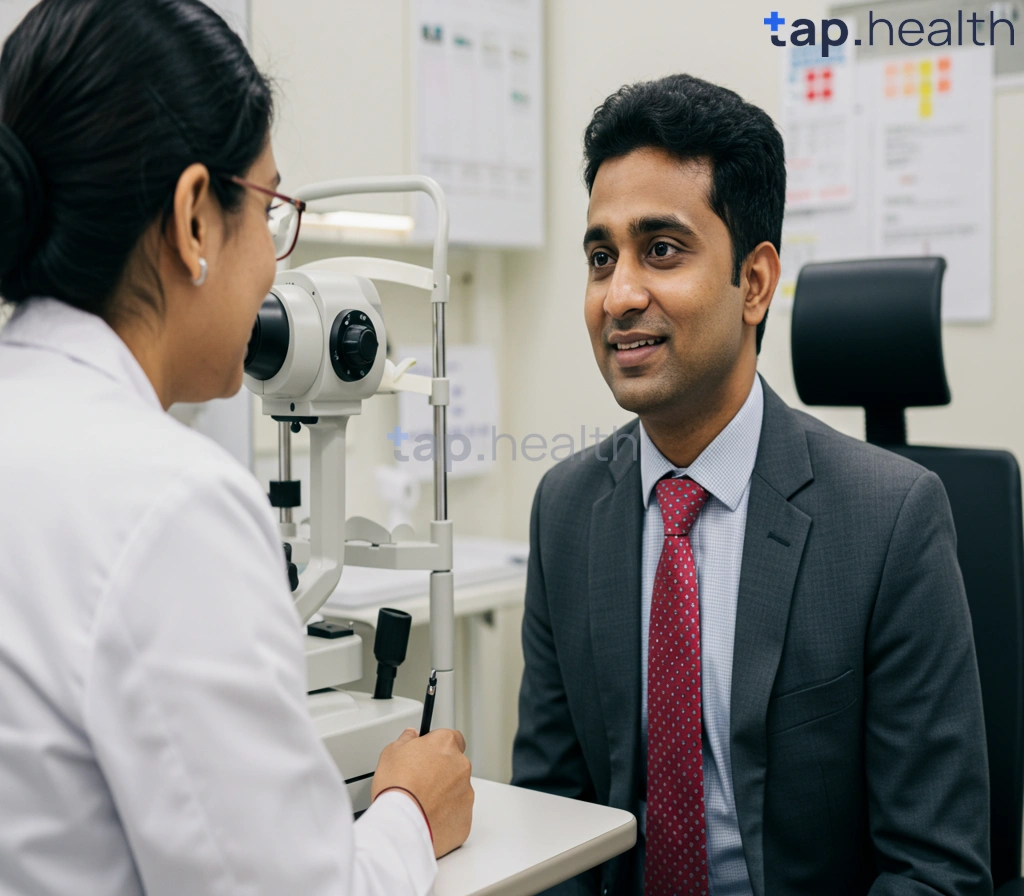Table of Contents
- Promising Diabetic Retinopathy Treatments: Latest Clinical Trial Data
- New Hope for Diabetic Retinopathy: Clinical Trial Results & Implications
- Understanding Diabetic Retinopathy: A Guide to Recent Clinical Trials
- Diabetic Retinopathy: What Do the Latest Clinical Trials Reveal?
- Clinical Trials & Advances in Diabetic Retinopathy Treatment
- Frequently Asked Questions
- References
Living with diabetic retinopathy can feel overwhelming, but there’s exciting news on the horizon! New hope for diabetic retinopathy is emerging from the latest clinical trials, offering promising advancements in treatment and management. This blog post dives into the key findings from recent studies, highlighting breakthroughs that could significantly impact your vision and overall well-being. We’ll explore the most promising new therapies and discuss what these results mean for you and your future. Get ready to learn about the exciting progress being made in the fight against diabetic retinopathy.
Promising Diabetic Retinopathy Treatments: Latest Clinical Trial Data
Diabetic retinopathy, a leading cause of blindness globally, disproportionately affects populations in India and other tropical countries. The good news is that recent clinical trials offer new hope. These trials are exploring innovative treatments aiming to slow, halt, or even reverse the progression of this debilitating eye disease. Early detection and intervention are crucial, especially considering that diabetic neuropathy, affecting 30-50% of diabetic patients, can further complicate treatment and reduce mobility. This added complication underscores the need for readily available and accessible care.
Emerging Treatments Showing Promise
Several promising treatment approaches are currently under investigation. These include novel anti-VEGF therapies, gene therapies, and even advancements in laser treatments. Clinical trial data suggests significant improvements in visual acuity and reduced risk of vision loss in many participants. While the long-term effects are still being studied, the early results are encouraging for patients in India and across tropical regions where access to advanced ophthalmological care can be limited.
Regional Considerations and Access to Care
The successful implementation of these new treatments requires addressing regional challenges. Improved access to ophthalmological screening and early diagnosis in underserved communities within India and other tropical nations is paramount. Increased awareness campaigns and affordable treatment options are crucial to ensure that the benefits of these groundbreaking clinical trials reach those who need them most. This includes training more healthcare professionals specialized in managing diabetic eye diseases and creating accessible healthcare infrastructure. Knowing How Often is Diabetic Eye Screening? is vital for early detection.
Next Steps: Seeking Expert Advice
If you are living with diabetes in India or a tropical country, regular eye exams are vital. Discuss the latest treatment options with your ophthalmologist. Early detection and proactive management can significantly improve your chances of preserving your vision. Don’t hesitate to ask questions and advocate for your eye health. Your vision is precious – protect it. For more information on maintaining your eye health, check out our guide on How to Protect Your Vision with Diabetes: Essential Eye Care Tips.
New Hope for Diabetic Retinopathy: Clinical Trial Results & Implications
Diabetic retinopathy, a leading cause of blindness, disproportionately affects populations in India and other tropical countries. The good news is that recent clinical trials offer renewed hope. These studies highlight significant advancements in treatment, offering improved outcomes and a better quality of life for millions. Early detection and intervention are crucial, particularly given the high prevalence of diabetes and its associated complications in these regions.
Promising Clinical Trial Results
Several ongoing and recently completed clinical trials are showcasing promising results in managing diabetic retinopathy. These trials explore novel therapeutic approaches, including innovative drug delivery systems and advanced laser treatments. For example, some studies show a significant reduction in disease progression and improved visual acuity in patients receiving these new therapies. The implications are significant, potentially reducing the global burden of vision loss associated with diabetes. This is especially pertinent given that diabetes increases the risk of kidney disease, with nearly 30% developing diabetic nephropathy. Addressing retinopathy effectively also contributes to better overall health management. Furthermore, managing blood sugar levels effectively is crucial, and exploring options like Safe and Effective Dietary Supplements for Diabetes Care can be beneficial for some.
Implications for India and Tropical Countries
The availability and accessibility of these new treatments remain a challenge in many parts of India and other tropical regions. However, the positive results from clinical trials underscore the need for increased investment in healthcare infrastructure and public awareness campaigns. Early detection programs, coupled with affordable and accessible treatments, are essential to maximizing the benefits of these advancements. Seeking regular eye examinations is crucial, especially for individuals with diabetes. This proactive approach can significantly improve the prognosis and quality of life for people affected by diabetic retinopathy in these regions. Consult your ophthalmologist to discuss the latest treatment options and screening recommendations. Moreover, advancements in technology can significantly improve diabetes management; learn more about How Can New Technological Advances Improve Diabetes Lifestyle?.
Understanding Diabetic Retinopathy: A Guide to Recent Clinical Trials
The Silent Threat of Diabetic Retinopathy in India and Tropical Countries
Diabetic retinopathy, a leading cause of blindness, silently affects millions. The alarming statistic that 50% of diabetes cases worldwide are undiagnosed, as highlighted by the International Diabetes Federation, is particularly concerning for India and other tropical countries with high diabetes prevalence. This underscores the urgent need for increased awareness and access to early detection and treatment. Many individuals in these regions may be unaware of their condition or lack access to regular eye examinations, leading to delayed diagnosis and irreversible vision loss. Managing this condition effectively becomes even more crucial as we age, as highlighted in our article on Managing Diabetes as You Age: Challenges and Solutions.
Promising Advances in Clinical Trials
Fortunately, significant progress is being made in the field of diabetic retinopathy treatment. Recent clinical trials have yielded promising results with novel therapies targeting various stages of the disease. These advancements offer renewed hope for preventing vision loss and improving the quality of life for affected individuals. While specific details vary across trials, many focus on anti-VEGF injections and laser treatments, showing efficacy in slowing or halting disease progression.
Taking Action: Prioritizing Eye Health
For individuals with diabetes in India and tropical countries, proactive eye care is paramount. Regular comprehensive eye examinations are crucial for early detection and timely intervention. Increased awareness campaigns and accessible screening programs are vital to combating this largely preventable cause of blindness. Early diagnosis and treatment are key to preserving vision. Seek regular check-ups with an ophthalmologist and discuss your risk factors to protect your sight. Remember that maintaining good health is especially important when planning travel, as detailed in our guide on Traveling with Diabetes: Essential Tips for a Safe & Healthy Journey.
Diabetic Retinopathy: What Do the Latest Clinical Trials Reveal?
Diabetic retinopathy, a leading cause of blindness among adults, is a serious concern globally, especially in regions like India and other tropical countries. The impact extends beyond vision loss; nearly 15% of diabetics experience foot ulcers in their lifetime, significantly increasing the risk of amputation. This alarming statistic highlights the critical need for early detection and effective treatment of diabetic retinopathy. Recent clinical trials offer a glimmer of hope, showcasing promising advancements in managing this debilitating condition.
Promising New Treatments
Several ongoing clinical trials are investigating innovative therapies, including novel anti-VEGF agents and gene therapies. These trials show significant potential in slowing or even reversing the progression of diabetic retinopathy, especially in earlier stages. Early intervention is crucial, as the damage caused by diabetic retinopathy is often irreversible in advanced stages. The results from these trials are paving the way for improved treatment options and enhanced patient outcomes. Understanding the impact of diabetes on other organ systems is also crucial; for example, Which Diabetes Drug is Best for Diabetics with Kidney Disease? explores the challenges faced by patients with both diabetes and kidney disease.
Improved Access and Awareness in India and Tropical Countries
While significant progress has been made, access to timely and effective diagnosis and treatment remains a challenge in many parts of India and other tropical countries. Limited healthcare infrastructure and awareness campaigns contribute to late diagnosis, resulting in more severe complications. Increased access to ophthalmological services and public awareness programs are vital to address this disparity. Early screening, regular eye exams, and strict blood sugar control are paramount to preventing or delaying the onset and progression of diabetic retinopathy. The immune system’s role in managing diabetes is also important; for instance, Are Type 1 Diabetics Immunocompromised? discusses the complexities of the immune system in Type 1 diabetes.
Taking Action: Protecting Your Vision
Regular eye examinations are crucial, particularly for individuals with diabetes. Don’t delay seeking professional help if you experience any changes in your vision, such as blurred vision, floaters, or dark spots. Early detection is key to preserving vision and reducing the risk of serious complications like foot ulcers and amputation. Connect with your doctor or a qualified ophthalmologist today to discuss your risk and develop a personalized management plan. Protecting your eyesight is an investment in your overall health and well-being.
Clinical Trials & Advances in Diabetic Retinopathy Treatment
Diabetic retinopathy, a leading cause of blindness, disproportionately affects a significant global population. Statistics reveal that 61% of people with diabetes are aged between 20-64 years, a crucial working-age group, while 39% are 65+ years (Source). This highlights the urgent need for effective treatment and prevention strategies, particularly in India and other tropical countries where diabetes prevalence is high.
Promising New Treatments
Recent clinical trials have shown promise in slowing or even reversing the progression of diabetic retinopathy. These advancements include innovative therapies targeting vascular endothelial growth factor (VEGF), a key driver of the disease. Furthermore, research into gene therapy and stem cell transplantation offers hope for long-term solutions. While many trials are ongoing, early results are encouraging, particularly for those in the early stages of the disease. Access to these treatments is crucial, especially in regions where healthcare resources may be limited.
Regional Considerations for India and Tropical Countries
The impact of diabetic retinopathy is amplified in tropical regions due to factors such as higher diabetes prevalence and limited access to specialized eye care. Early detection and regular eye exams are paramount. Increased awareness campaigns and affordable screening programs are essential in these regions to ensure early intervention and improve treatment outcomes. Furthermore, research focusing on the specific needs and challenges of these populations is critical for developing effective and accessible solutions. Maintaining a healthy lifestyle, including following a proper Diet Chart for Diabetic Patients to Control Diabetes, is also crucial.
Taking Action
The fight against diabetic retinopathy requires a multifaceted approach. Individuals with diabetes should prioritize regular eye examinations as a critical preventative measure. Furthermore, supporting research initiatives and advocating for increased access to advanced treatments in India and other tropical countries is vital to combating this devastating disease. Early diagnosis and proactive management, including prioritizing The Importance of Quality Sleep in Managing Diabetes, are key to preserving sight and improving the quality of life for millions.
Frequently Asked Questions on Diabetic Retinopathy Clinical Trials |
Q1. What is diabetic retinopathy and why is it a concern?
Diabetic retinopathy is a serious eye complication caused by diabetes, leading to vision loss and blindness. It’s a major concern globally, especially in countries like India, impacting many people.
Q2. What are the new treatment options showing promise for diabetic retinopathy?
Recent clinical trials highlight promising new treatments, including advanced anti-VEGF therapies and gene therapies. These show improvements in visual acuity and reduced vision loss.
Q3. What are the main challenges in implementing these new treatments effectively?
Successful implementation faces hurdles such as limited access to eye screenings, affordability of treatments, and insufficient healthcare infrastructure in many regions.
Q4. How can I reduce my risk of developing diabetic retinopathy or vision loss?
Early detection is key. Regular eye exams are vital, especially if you have diabetes. Maintaining good diabetes management also plays a crucial role in preventing or delaying vision problems.
Q5. What is being done to improve access to care and treatment for diabetic retinopathy?
Efforts are underway to improve awareness through campaigns, expand access to healthcare facilities, and train more healthcare professionals to ensure that advancements reach those who need them most.
References
- AI-Driven Diabetic Retinopathy Screening: Multicentric Validation of AIDRSS in India: https://arxiv.org/pdf/2501.05826
- Diabetic Retinopathy Detection Using CNN with Residual Block with DCGAN: https://arxiv.org/pdf/2501.02300



